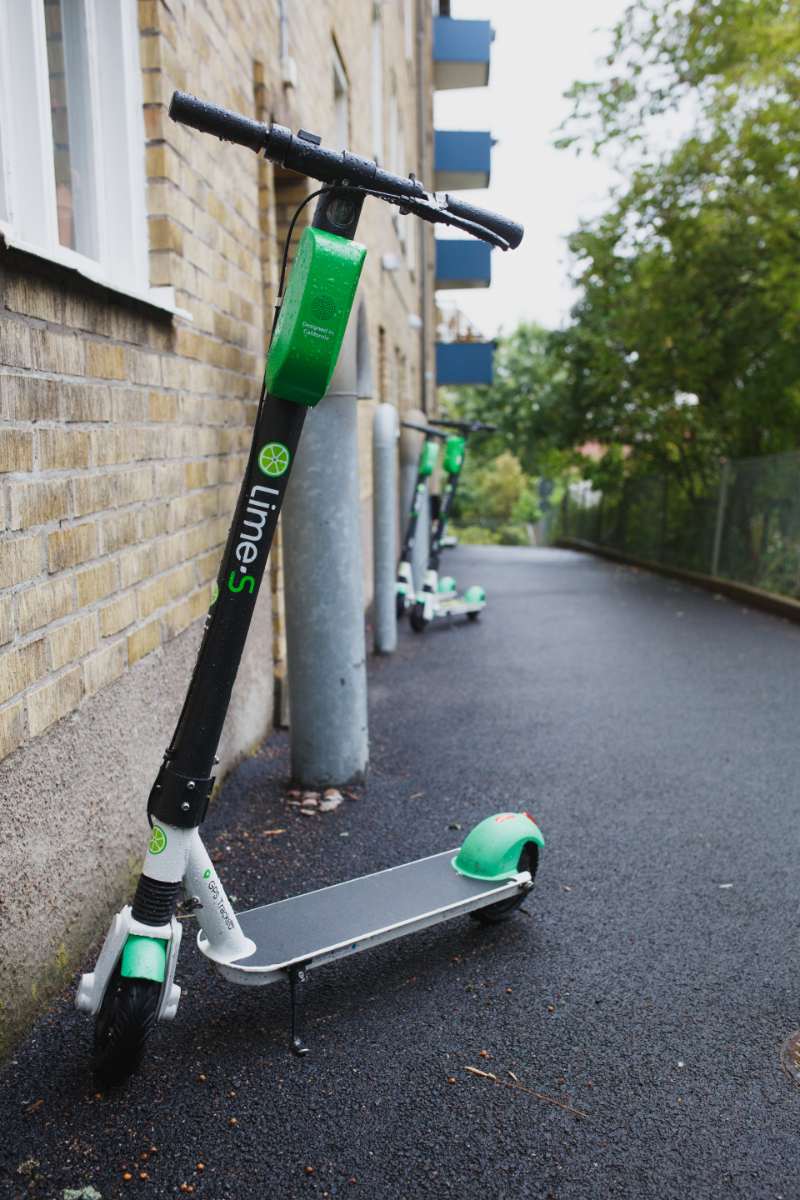
Electric scooters like these have been a common sight over the past few weeks in Edmonton. UAlberta urban sustainability experts weight in on the latest trend. Photo credit: Unsplash
Whether you love the trend, or don't see the appeal, you've likely seen an increasingly common sight on Edmonton streets this season: riders taking electric scooters out for a spin. University of Alberta experts in urban design are weighing in on the craze-and what it means for the conversation about sustainable cities.
"E-scooters have disrupted the binary choice of transportation-motorized and non-motorized-in the city's public right of way," said Sandeep Agrawal, professor in the Department of Earth and Atmospheric Sciences and director of the School of Urban and Regional Planning. "It's brought in another option to create a continuum between automobiles and pedestrians, providing an opportunity for our planners to redesign street spaces by giving more thoughtful and equitable allocation to accommodate this new mode of transportation."
The scooters, which have launched through Lime and Bird Canada, are rented by the minute, and could help in better connecting the city-which offers its own advantages.
"Cities like Edmonton developed mostly in the age of automobiles, embracing car-oriented development. This means it's difficult to live in if you do not regularly drive a car," said Bob Summers, associate director of the School of Urban and Regional Planning whose research focuses on how to transition cities to greater sustainability. "The financial costs of maintaining roads at this scale are tremendous-and it also increases the costs of services, including water piping, street lighting, policing, and fire protection."
So how does rethinking urban design beyond the age of the automobile to embrace the trend of these electric scooters-which can reach speeds of up to 20 kilometres an hour-provide potential benefits for the city? There are several, from Agrawal's perspective.
"These scooters are cheap to build, more energy-efficient, and more fuel-efficient than other alternatives. They require little or no additional infrastructure, and in the long run, they could reduce congestion on roads and public transport, encourage local tourism activities, and provide a stronger business climate."
A bumpy ride?
But the trend has brought concerns, as well. Mayor Don Iveson recently pointed out that while the scooters are approved for use on low-speed roads, bike lanes, and shared-use paths, they continue to show up on sidewalks. Agrawal explains some of the concerns:
"Issues such as safety concerns and potential incursions in regular automobile traffic by allowing e-scooters on the same road where cars and other larger vehicles are zipping by are also legitimate concerns to study," said Agrawal. "Improper parking, abandonment, cluttering, and safety are some of the issues cited in other cities."
"Managing e-scooters, in the long run, may also pose an issue," added Agrawal. "A good example is when a private company that introduced a bike share program in Toronto suddenly went bankrupt in 2013, leaving the City to take control. This could potentially happen with e-scooters as well."
Agrawal noted that the scooters are still in the early stages, and it will take some patience to see how things unfold. Summers agrees:
"Cities have been focusing on building new infrastructure, such as Edmonton's separated bike lanes, new LRT lines, more skinny housing, and more walkable neighbourhoods," said Summers. "All of this helps to shift people's transportation modes. And then, almost out of nowhere, scooters arrived-and we don't really know what to do with them and how they fit in. The way forward for our cities will be to figure out how to integrate and manage options like scooters to maximize their positive impact and mitigate the challenges they bring."
Want to learn more about sustainable city design? Learn more through the School of Urban and Regional Planning's website.